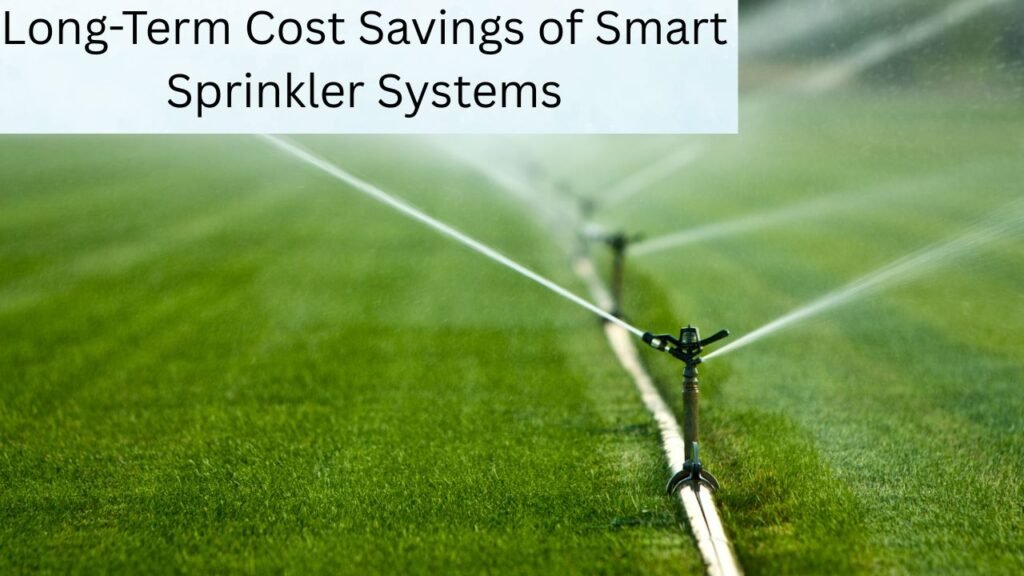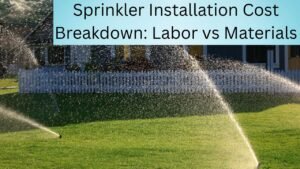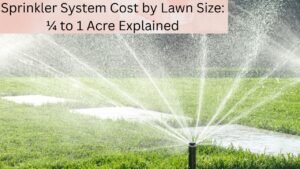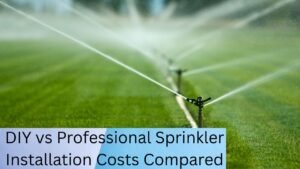Installing a sprinkler system is an investment. But not all sprinkler systems are built the same. Smart sprinkler systems are changing the game—and for good reason. These systems save water, lower your utility bills, and help your lawn thrive with minimal effort.
Let’s break down exactly how smart irrigation systems deliver long-term savings. This isn’t about guesswork. It’s about efficiency, automation, and reducing waste. Whether you’re upgrading from an old controller or starting from scratch, you’ll want to know where your money goes—and how it comes back.

What Is a Smart Sprinkler System?
A smart sprinkler system uses Wi-Fi-connected controllers, moisture sensors, and weather data to automate watering. Unlike traditional systems that run on timers, smart systems adapt to real-time conditions.
They use local forecasts, soil moisture, plant type, and zone settings to apply just the right amount of water. No more watering during rainstorms or running sprinklers when the lawn doesn’t need it.
Upfront Costs vs Long-Term Gains
Smart sprinkler systems usually cost more upfront. Expect to pay $200 to $600 for a quality smart controller alone. If you’re upgrading an older system, labor might add another $300 to $700. For a full smart irrigation install, the price could hit $3,000 to $7,000 depending on lawn size and zone count.
But here’s where things turn around.
You start saving money from day one. These systems cut unnecessary watering, protect your landscaping investment, and reduce water runoff. Most homeowners see the system pay for itself within two to three years.
Where the Savings Come From
1. Reduced Water Bills
This is the biggest benefit. Smart sprinklers use up to 50% less water than conventional systems. That’s not hype—it’s backed by data.
EPA WaterSense certified smart controllers save households an average of 8,800 gallons per year. In states with tiered water rates, that could mean hundreds of dollars saved annually.
Even in places where water is cheap, the conservation adds up. And when drought restrictions hit, a smart system keeps you compliant without killing your grass.
2. Fewer Landscaping Repairs
Overwatering is more damaging than most people think. It drowns plant roots, invites fungus, and erodes soil. Underwatering, on the other hand, stresses turf and causes bare patches.
Smart systems maintain balance. That means:
- Fewer dead spots to reseed
- Lower risk of disease or fungus
- Healthier roots, better growth
You save on lawn treatments, sod replacement, and time spent troubleshooting.
3. Lower Maintenance and Monitoring Costs
Smart irrigation systems come with mobile apps. You can adjust watering schedules, check soil data, and monitor usage remotely. Some models even send alerts if there’s a leak or clogged head.
This helps avoid:
- Sky-high water bills from broken valves
- Lawn damage from faulty heads
- Emergency repair fees
Over time, these features protect both your lawn and your wallet.
4. Seasonal Adjustments Without Manual Labor
With a basic system, you need to tweak the schedule every few months—or risk wasting water. Smart controllers handle this automatically.
They:
- Adjust for daylight hours
- Scale back in cooler seasons
- Delay watering during storms
- Increase output during heatwaves
This level of precision ensures you’re never using more water than you need, even if you’re out of town or forget.
5. Increased Property Value
Today’s homebuyers look for tech features that save energy and cut costs. A smart sprinkler system may not seal the deal alone, but it adds value.
It shows that your home is efficient, well-maintained, and future-ready. For eco-conscious buyers, it’s a big bonus. And if you’re selling in a water-restricted area, it could even give you an edge over similar listings.
Comparing Old Systems vs Smart Systems
| Feature | Traditional System | Smart System |
|---|---|---|
| Adjusts to weather | No | Yes |
| Soil moisture detection | No | Yes (via sensors) |
| Water usage monitoring | No | Yes (with app) |
| Leak detection | Rare | Often included |
| Seasonal auto-scheduling | Manual | Automatic |
| Remote access | No | Yes (Wi-Fi control) |
| Average water saved | Low | Up to 50% |
How Much Can You Really Save?
Let’s put some rough numbers on it.
Say your current water bill is $100 per month during summer, largely from irrigation. If a smart system reduces usage by 40%, that’s $40 saved each month over six months—$240 per year.
Add in fewer repair costs (estimated $100–$200 annually), less lawn replacement, and lower risk of overwatering fines, and you’re looking at $300–$500 in yearly savings.
If you spent $800 on a controller and install, your payback period could be less than 2 years. After that, it’s pure savings.
Rebates and Tax Incentives
Many local governments and water providers offer rebates for installing smart irrigation systems. These programs reward you for reducing demand on public water systems.
Some rebates cover:
- Smart controllers
- Rain sensors
- Drip irrigation systems
- Flow meters
Check your local utility’s website. These incentives can offset up to 50% of your upfront costs in some areas.
Tips to Maximize Your Savings
- Choose EPA WaterSense-certified controllers – They meet strict performance standards.
- Set accurate zones – Match irrigation zones to plant type and sunlight exposure.
- Install rain and soil moisture sensors – These reduce unnecessary cycles.
- Audit your irrigation system yearly – Make sure everything runs efficiently.
- Use drip irrigation in beds – It’s better for shrubs and garden zones.
- Winterize properly – Avoid freezing damage and repair bills.
Final Thoughts
Smart sprinkler systems are more than just a convenience—they’re a long-term strategy to lower water usage, reduce maintenance, and protect your landscaping investment.
Sure, the upfront cost may seem high. But when you look at the full picture—lower water bills, fewer repairs, better lawn health—it’s one of the smartest outdoor upgrades you can make.
Ready to stop wasting water and start saving money? Make the switch to a smart sprinkler system and watch your lawn (and budget) thrive.




